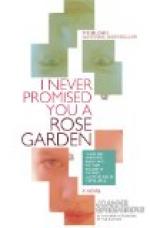profusely as to appear to be in
clusters. Delicately fragrant, leaves
deep green and remarkably free from
blights. Perfectly hardy; forms so
large a bush in time that it should
be placed in the rose shrubbery
rather than amid smaller species.
9. Margaret Dickson. A splendid, finely formed, fragrant
white rose, with deep green foliage.
10. Coquette des Blanches. One of the very hardy white roses,
an occasional pink streak tinting the
outside petals. Cup-shaped and a
profuse bloomer.
11. Coquette des Alps. A very hardy bush, coming into bloom
rather later than the former and
lasting well. Satisfactory.
Red and Crimson
12. General Jacqueminot. Bright
velvety crimson. The
established
favourite of its
colour
and class, though fashion has
in
some measure pushed it aside for
newer
varieties. May be grown to a
large
shrub. Fragrant and hardy. Best
when
in bud, as it opens rather flat.
13. Alfred Colomb. Bright
crimson. Full, sweet. A
vigorous
grower and entirely
satisfactory.
If you can grow but one
red
rose, take this.
14. Fisher Holmes. A seedling
of Jacqueminot, but of
the
darkest velvety crimson; fragrant,
and
blooms very early.
15. Marshal P. Wilder. Also
a seedling of Jacqueminot.
Vigorous
and of well-set foliage.
Full,
large flowers of a bright
cherry
red. Very fragrant.
16. Marie Bauman. A crimson
rose of delicious
fragrance
and lovely shape. This does
best
when budded on brier or Manette
stock,
and needs petting and a diet of
liquid
manure, but it will repay the
trouble.
17. Jules Margottin. A fine,
old-fashioned, rich red
rose,
fragrant, and while humble in
its
demands, well repays liberal
feeding.
18. John Hopper. A splendid,
early crimson rose,
fragrant
and easily cared for.
19. Prince Camille de Rohan. The peer
of dark red roses, not
large,
but rich in fragrance and of




